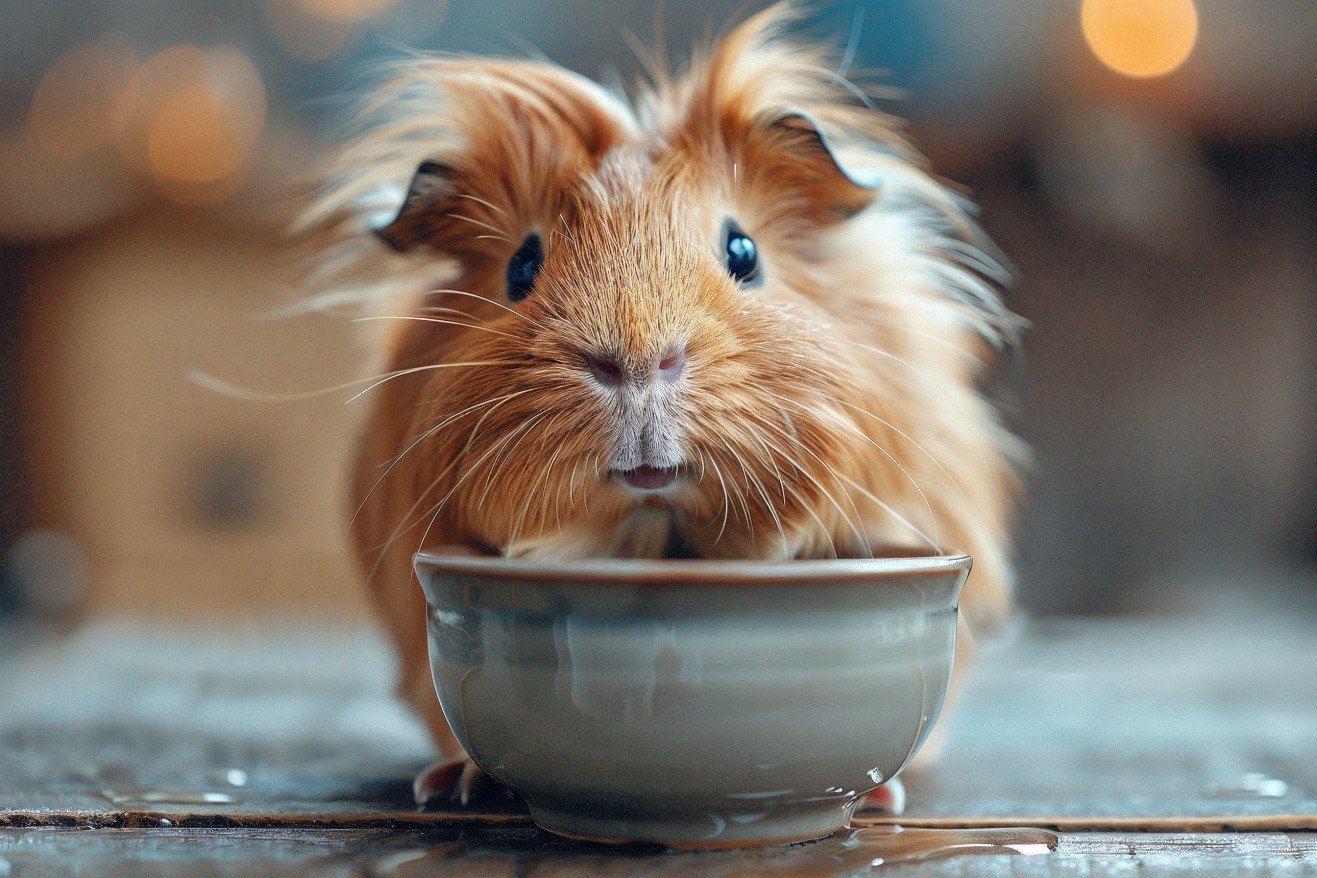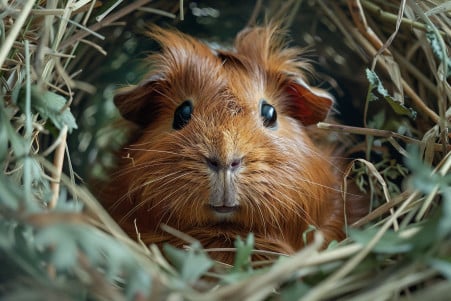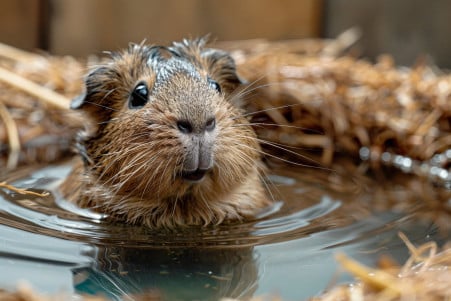Can Guinea Pigs Drink from a Bowl? Why Water Bottles Are Best
29 May 2024 • Updated 28 May 2024

If you're wondering if your guinea pig can drink from a bowl like other animals or if you need a special water bottle for their cage, the answer is that guinea pigs can drink from bowls, but water bottles are the best option for your pet because they help prevent messes and keep your pet's living space clean and dry. While bowls can be used in a pinch, the open water is more likely to become soiled and contaminated and can be spilled by your pet.
In this article, we'll review the information from reputable sources on guinea pig care to explain why water bottles are the safest, most sanitary way to ensure these members of the cavy family stay properly hydrated. We'll also offer advice on where to place and how to maintain your guinea pig's water bottle to ensure they're happy and healthy in their home.
Can guinea pigs drink out of a bowl?
How to Tell If Your Guinea Pig Is Dehydrated
Making sure your guinea pig is getting enough water is important for their overall health. In fact, according to GuineaDad, guinea pigs need 50-300 ml of fresh water a day, and they can die from dehydration in as little as 12-48 hours if they don't get enough water.
Some of the most common signs of dehydration in guinea pigs include dark, strong-smelling urine, skin that stays up when you pinch and pull it (also known as tenting), teardrop-shaped or small, dry droppings, and eyes that are sunken and lack their usual alertness. According to Arizona Exotics, other signs of dehydration in guinea pigs include crusty eyes, thick saliva, a lack of appetite, and a small amount of dark urine.
If your guinea pig is sick, it's important to monitor their water intake and weight closely since dehydration can lead to rapid weight loss. In severe cases, you may need to syringe-feed water or have your vet administer subcutaneous fluids under the skin to rehydrate your pet, according to Arizona Exotics. The earlier you catch dehydration, the easier it is to treat at home, so make sure you're keeping an eye on your guinea pig's hydration status.
Pros and Cons of Using a Water Bowl for Guinea Pigs
Water bowls are a more natural and easier way for guinea pigs to drink than water bottles, says Amazing Animal Tricks. However, The Guinea Pig Forum explains that bowls can quickly become soiled with feces, urine, hay, and other cage debris.
In addition, Hepper points out that bowls can be knocked over or spilled by active guinea pigs, which can lead to wet bedding and health problems. Meanwhile, Hepper says that water bowls can be dangerous for baby guinea pigs if the water is too deep, as they can drown in it. Bowls need to be cleaned and maintained more often than water bottles to prevent bacteria from growing in them, according to Guinea Pig Cages.
How to Safely Use Water Bowls for Guinea Pigs
If you opt for water bowls, make sure to use a material that's chew-proof, such as ceramic, stainless steel, or heavy plastic, according to Piggy Bedspreads. In addition, the bowls should be shallow to prevent drowning, especially in baby guinea pigs, notes The Guinea Pig Forum. To keep the bowl in place and avoid spills, attach it to the side of the cage with clips or duct tape, advises Guinea Pig Cages.
It's also important to keep the bowl clean and the water fresh to avoid bacterial contamination. Make sure to wash and refill the bowl daily, according to Piggy Bedspreads. If you want to give your guinea pig the most options, you can always use both a water bottle and a water bowl to let them decide which one they prefer, says The Guinea Pig Forum.
Water Bottles Make It Easier to Keep Hydration Levels Consistent
GuineaPig Corner recommends water bottles as the best way to provide water to guinea pigs because they are easy to keep clean and maintain. HayPigs!® adds that water bottles should be cleaned and refilled with fresh water every day to prevent the growth of bacteria and algae.
In addition, GuineaPig Corner warns that in cold weather, it's important to make sure the water bottle doesn't freeze as guinea pigs can't tolerate extreme temperatures. GuineaPig Corner also notes that it's important to keep an eye on how much water guinea pigs are drinking and to contact a vet if their water intake increases or decreases significantly.
Because water bottles are easy to keep clean and maintain, they are the best way to make sure guinea pigs are getting enough water. This is especially important since, as noted in all of the sources, dehydration can have serious health consequences for guinea pigs. By making sure that water bottles are properly maintained, guinea pig owners can make sure their pets are getting the water they need to stay healthy.
Making Sure Your Guinea Pig Has a Comfortable and Safe Home
In addition to ensuring that guinea pigs have access to clean water, their habitat should also be comfortable and safe. According to Paw Inspired, this means using bedding that is soft, absorbent, and non-toxic, such as fleece liners. It also means making sure that there is enough room to create separate spaces for sleeping, eating, and going to the bathroom, which is important for their mental and physical health, according to Paw Inspired.
Finally, making sure that there are hiding places and chew toys in the habitat will help guinea pigs meet their natural needs and ensure that their home is as comfortable as possible. As the studies above make clear, a comfortable and safe home with access to clean water is essential for guinea pig health and well-being.
Conclusion: What Water Source Is Best for Your Guinea Pig?
Although guinea pigs can drink from water bowls, water bottles are the best option for their cages. Bowls are an option but they need to be cleaned and maintained more often to keep them from getting contaminated and making a mess. Keep an eye on your guinea pig's water consumption and call your vet if you notice signs of dehydration or overhydration.
While it's important to make sure your guinea pig is properly hydrated, it's also important to make sure they have a comfortable, enriched environment. Think about your guinea pig's personal preferences and needs when it comes to choosing between water bottles and bowls.


